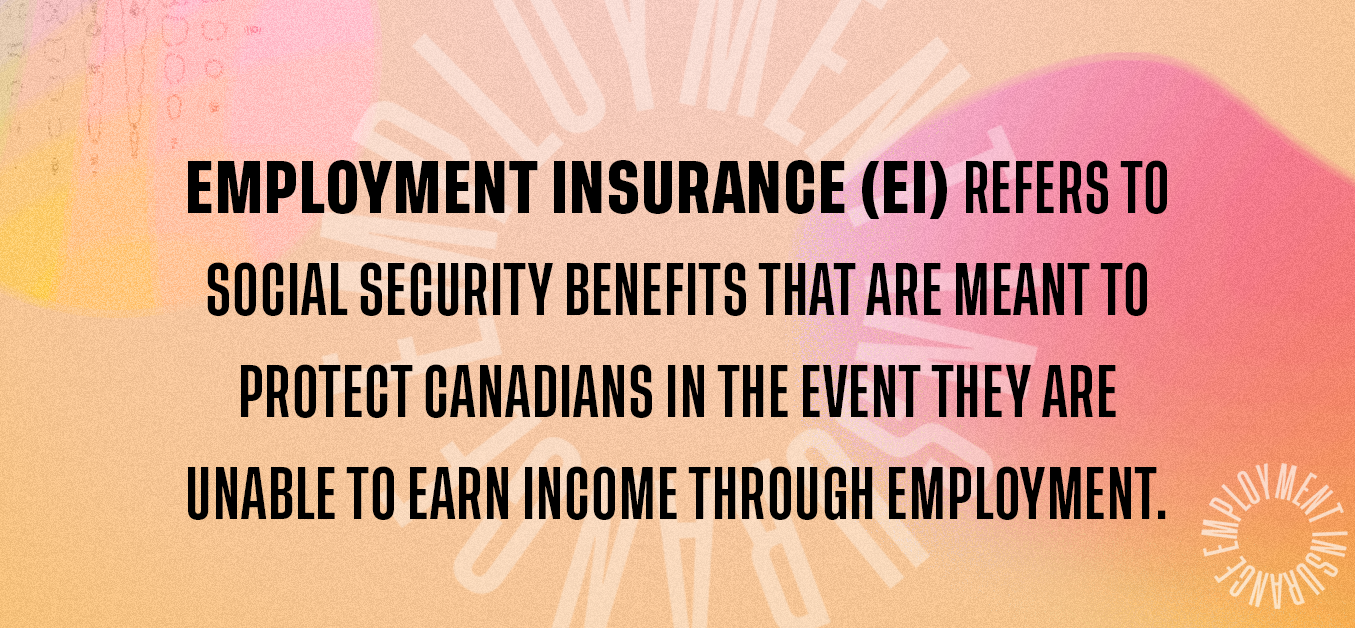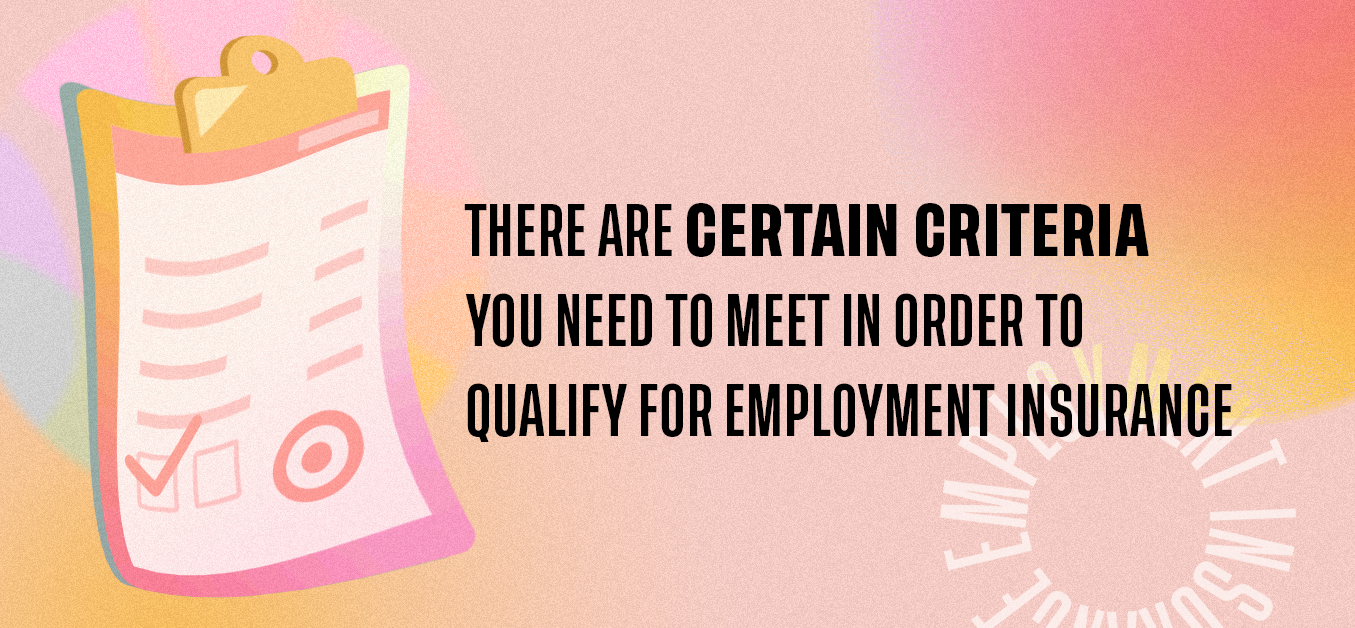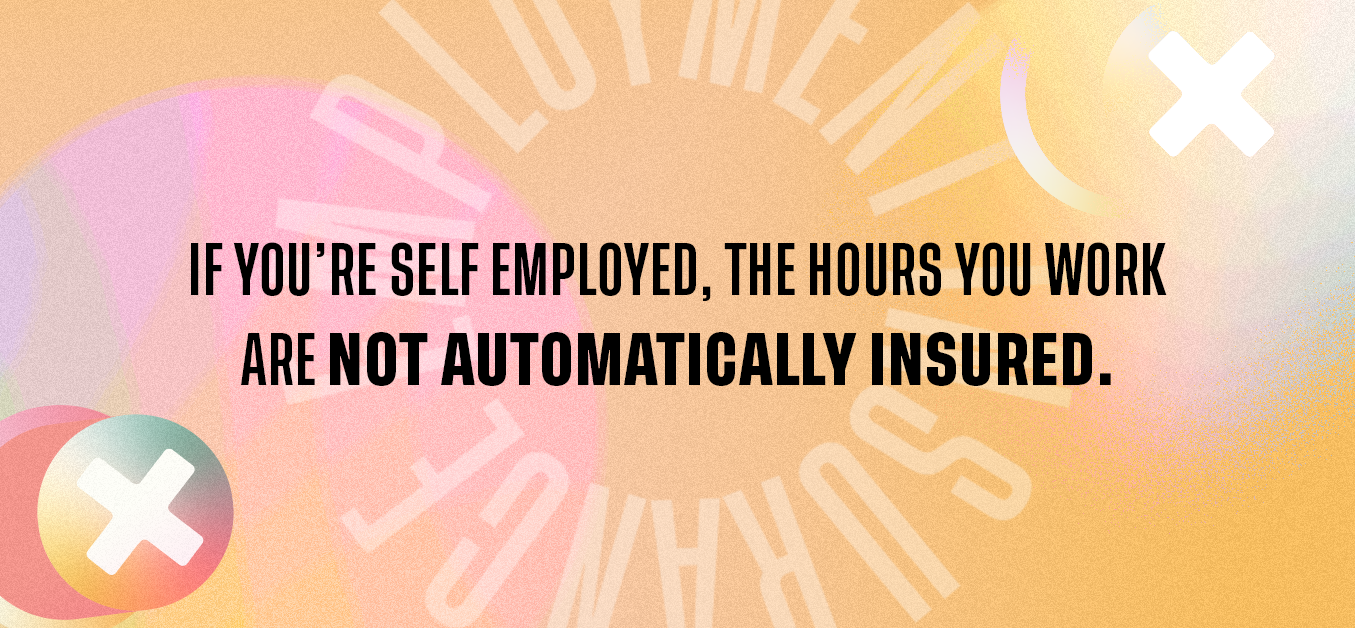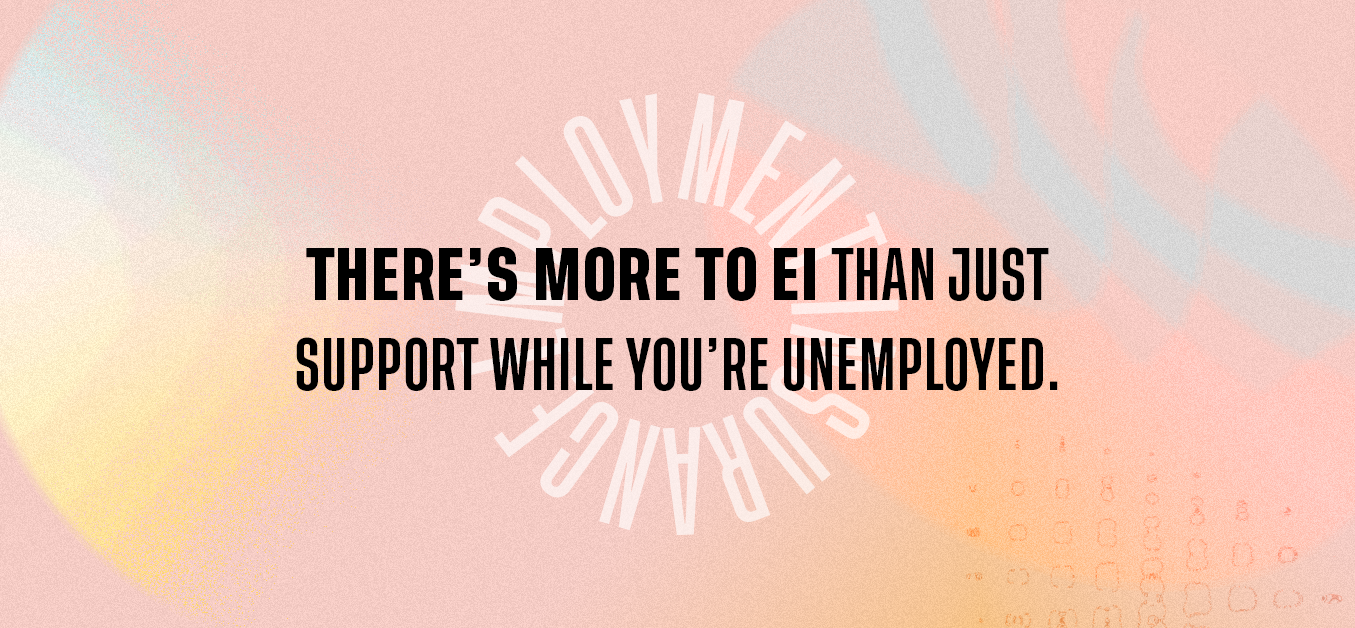Basics: What is Employment Insurance?
Thanks, Canada!
Let’s get back to basics! This explainer series unpacks common—and commonly misunderstood—terms so you can level up your financial vocab. Today? Employment Insurance!
Maybe you’ve noticed those little deductions on your paystub. What the heck are they? Among them, you’re probably seeing deductions for “CPP” (your Canada Pension Plan) and “EI” (Employment Insurance).
Both of these are social security programs most Canadians are eligible for. In order to take advantage of these programs, however, you have to pay into them. Let us explain.
This is a complicated topic and we’re just going to introduce the nuts and bolts today. You can find out all of the details of this benefits program here.
What is Employment Insurance?

Employment Insurance (EI) refers to a whole host of social security benefits that are meant to protect Canadians in the event they are unable to earn income through employment.
When most people think of EI, they probably think of the benefits program that provides income in the event you lose your job through no fault of your own. If you’re laid off, for example, you may be eligible for EI.
But there’s more to EI than just support while you’re unemployed. EI also encompasses maternity and parental leave, sickness benefits, caregiving benefits, and even benefits for self-employed fishers looking for work.
EI ties your benefits to your wages, so the amount you’ll receive is in part dictated by your income, how long you have worked, and your employer’s contributions.
Employers match employee contributions by 1.4 times. So if you contribute $1 via a paycheque deduction, your employer contributes $1.40. Generally, your EI premiums are automatically deducted from your paycheques each month.
How Do I Qualify for EI Benefits?

There are certain criteria you need to meet in order to qualify for employment insurance and there are different criteria for each type of benefit. Here, we’re just going to discuss the criteria for regular benefits—the kind you may be eligible for if you were laid off.
So, to qualify:
- You need to have contributed to your own EI fund via paycheque deductions
- You need to have worked for the required number of insurable employment hours in the last 52 weeks (right now, this number is 120 hours—it may change when COVID relief measures expire)
- You need to have been without work and without pay for at least 7 consecutive days in the last 52 weeks
- You need to have lost your employment through no fault of your own
If you meet these criteria, you may be eligible for employment benefits. The Canadian government is careful to note on their benefits pages that eligibility isn’t a given, and the best way to find out about your own eligibility is simply by contacting a government representative.

If you’re self employed, the hours you work are not automatically insured. As such, self-employed people must decide if they’d like to enrol in the EI scheme, and deduct portions of their income to pay into the program. Alternatively, self-employed folks may opt to simply save up on their own to support themselves in case they may lose income. If this appeals to you, check out our post on emergency funds here.
How Do I Get EI Benefits?

To get benefits, you have to apply for them via the Canadian government website. You’ll have to provide information about why you’re in need of the benefit, and prove your eligibility. While you’re receiving regular benefits—for example if you’ve been laid off and can’t find new work—you’ll also need to prove that you’re actively looking for new work.
The amount you’ll receive every week while on EI depends on your personal circumstances.
Generally, the basic rate for calculating EI benefits is 55% of your average insurable weekly earnings, up to a maximum amount. As of January 1, 2021, the maximum yearly insurable earnings amount is $56,300; this means that you can receive a maximum amount of $595 per week.
You’ll receive EI benefits for between 14 and 45 weeks, generally speaking. This exact length will be determined by how many insurable hours you worked in the last 52 weeks, and by the unemployment rate in your region. If unemployment is high and the job market is very competitive, it may be more likely you’d receive EI for a longer period of time.
In sum, EI benefits are designed to pay your bills and put food on the table if you’re unable to work for a number of reasons. But in order to take advantage of these genuinely cool benefits, you need to have worked a certain number of insurable hours, and apply through the correct government channels.
If you’re unsure about your eligibility for any of the employment insurance benefits, it’s a good idea to read through the government materials and speak with an agent to find out for sure.
This has been: basics! You got this, friends!
This blog is provided for informational purposes only.